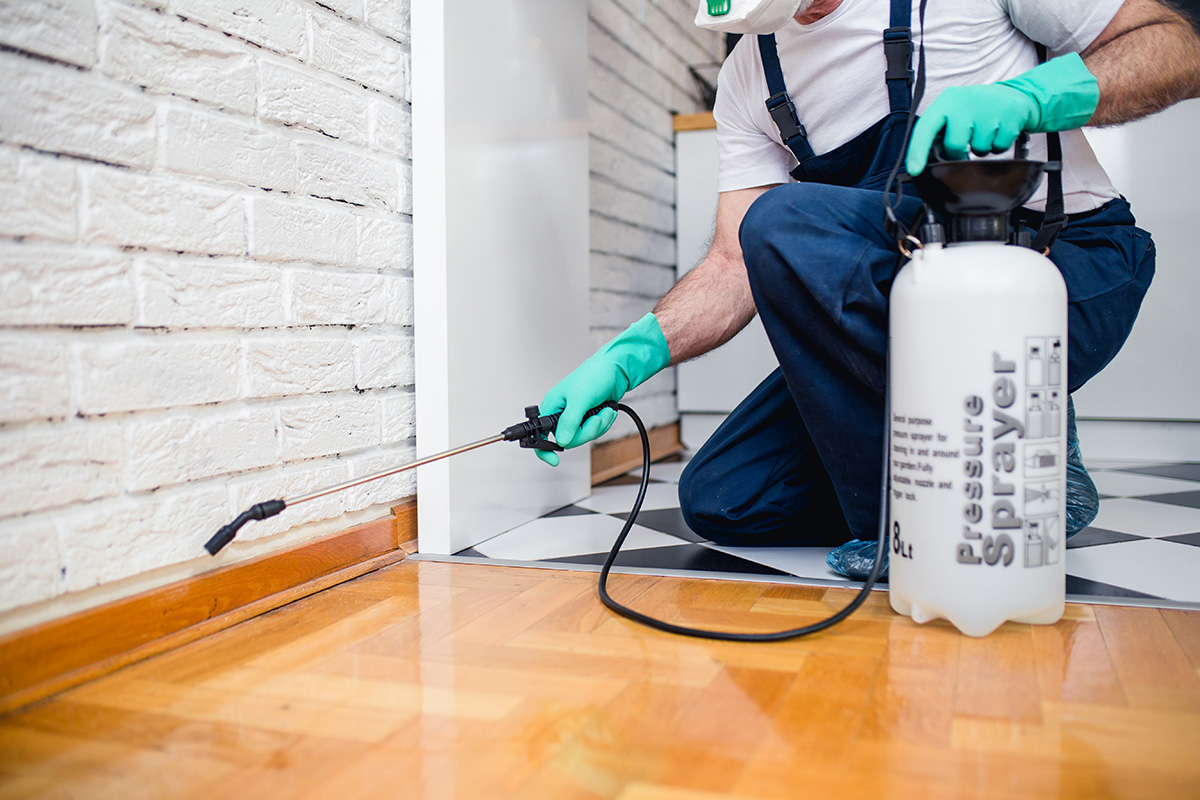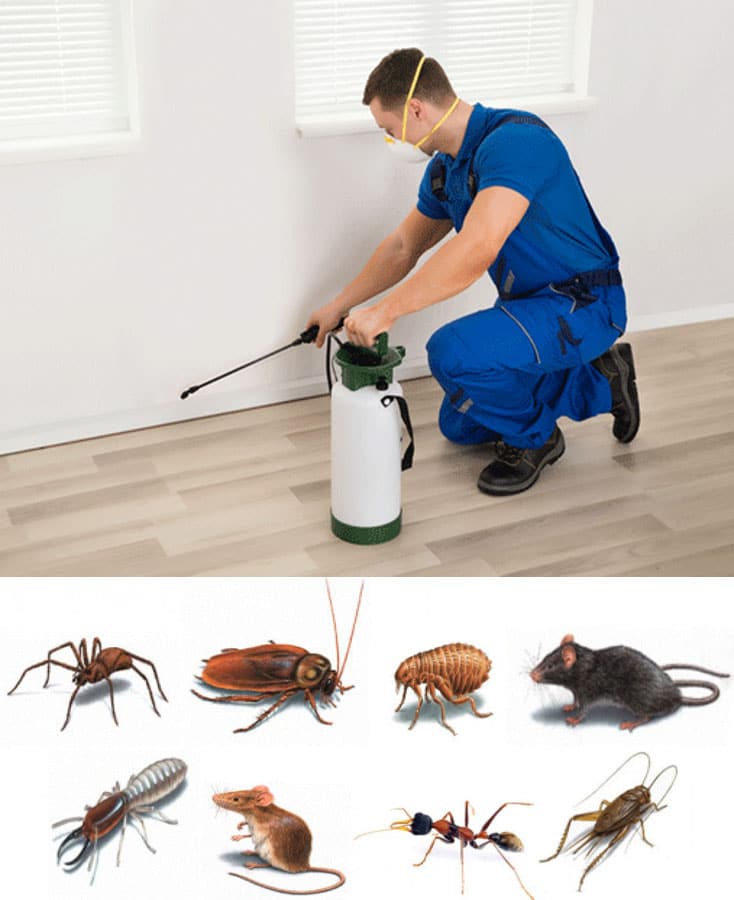Relied On A1 Exterminator Charlotte NC - Comprehensive Pest Solutions
Relied On A1 Exterminator Charlotte NC - Comprehensive Pest Solutions
Blog Article
Bed Pest Treatment Failure: Comparing Chemical Vs. Non-Chemical Solutions
In the world of bug control, specifically when dealing with the persistent issue of bed insects, the selection in between chemical and non-chemical treatment solutions can be an essential one. Both techniques offer distinctive benefits and downsides, influencing elements such as efficiency, security considerations, and general price. By checking out the nuanced information of each approach, a clearer understanding of which path to go after in resolving a bed insect invasion can be achieved.
Effectiveness of Chemical Therapies
Chemical therapies for bed insect infestations have been commonly recognized for their potent and rapid effectiveness in getting rid of these bugs. When thinking about the performance of chemical treatments, it is crucial to recognize that they can give a quick and detailed option to a bed insect issue. Professional pest control men commonly rely upon pesticides to target bed insects at various stages of their life cycle, consisting of adults, nymphs, and eggs. These chemicals commonly function by interfering with the bed pests' nerve system, causing paralysis and ultimate death.
Additionally, chemical treatments have the advantage of offering recurring impacts, meaning that they can continue to remove bed insects also after the preliminary application. This residual action is particularly useful in combating any type of prospective re-infestations. Furthermore, the rapid activity of chemical treatments can bring alleviation to people dealing with extreme bed insect problems, enabling them to regain control of their home swiftly.
Safety And Security Worries With Chemical Solutions
One important aspect that calls for careful consideration when utilizing chemical options for bed insect therapy is making sure the safety and security of owners and the setting. While chemical therapies can be effective in removing bed bugs, they might pose risks otherwise handled appropriately. One of the key safety worry about chemical remedies is the prospective damage they can cause to human wellness. Exposure to certain chemicals made use of in bed insect treatments can lead to respiratory issues, skin irritation, or other adverse reactions, especially in people with pre-existing conditions or level of sensitivities. In addition, incorrect application or dosage of chemical pesticides can lead to toxic deposits lingering in the cured area, positioning lasting health and wellness risks to owners.
Additionally, the environmental effect of chemical solutions is an additional considerable factor to consider. Some chemicals utilized in bed insect therapies may be unsafe to helpful insects, wildlife, and environments if they leach right into the dirt or water supply. It is important to make use of chemical therapies judiciously, following security standards, and taking into consideration less harmful choices to minimize these threats and make sure the effective and risk-free monitoring of bed bug invasions.
Advantages of Non-Chemical Approaches
Thinking about the prospective safety worries and ecological effect related to chemical services for bed bug therapy, exploring non-chemical approaches presents a promising choice with several distinct benefits. Non-chemical methods supply a more secure alternative for houses, specifically those with straight from the source pets, individuals, or kids conscious extreme chemicals. These strategies remove the dangers of exposure to toxic substances, decreasing the capacity for damaging wellness results. Furthermore, non-chemical treatments are eco pleasant, as they do not contribute to air or water pollution, making them a lasting option for insect control.
Additionally, non-chemical options can be reliable in targeting bed pests, consisting of hard-to-reach locations where chemical treatments may not penetrate - A1 charlotte bed bug exterminator. Approaches such as warmth therapy, vacuuming, vapor cleansing, and cushion encasements supply complete removal without the use of unsafe chemicals.
Limitations of Non-Chemical Treatments

Furthermore, non-chemical therapies usually need numerous applications to attain successful elimination. This can be time-consuming and might not always ensure full removal of all bed bugs and their eggs, especially in hidden or hard-to-reach places.
Additionally, the success of non-chemical treatments greatly counts on proper implementation and thoroughness, which can be challenging for individuals without specialist know-how. Poor application of non-chemical methods may result in insufficient eradication, leading to persistent infestations and the need for additional treatments.
Therefore, while non-chemical treatments have their benefits, it is essential to acknowledge these limitations and consider them when figuring out one of the most reliable approach for managing bed bug invasions.
Expense Comparison: Chemical Vs. Non-Chemical Options
Provided the restrictions connected with non-chemical therapies, a vital element to examine in the context of bed pest monitoring is the cost comparison between chemical and non-chemical choices. Chemical treatments typically involve the application of insecticides by professionals, which can vary here from $250 to $900 per room, depending on the severity of the invasion and the size of the location to be treated. In comparison, non-chemical therapies like heat treatment or heavy steam can be extra expensive, with expenses varying from $1,000 to $6,000 for an entire home. While the preliminary price of chemical therapies may appear reduced, several therapies may be called for to completely eradicate the invasion, possibly boosting the overall expense. On the other hand, non-chemical alternatives may provide a more green and sustainable remedy, although they can be cost-prohibitive for some individuals. Inevitably, when thinking about the cost of bed insect treatment choices, it is essential to consider the in advance costs against the performance and long-lasting sustainability of the selected method.
Conclusion

Considering the potential safety worries and environmental influence associated with chemical remedies for bed bug treatment, discovering non-chemical techniques offers an appealing alternative with numerous unique advantages.Offered the restrictions associated with non-chemical therapies, a necessary element to examine in the context of bed bug monitoring is the expense comparison in between chemical and non-chemical choices. In navigate here comparison, non-chemical therapies like warmth therapy or steam can be much more pricey, with prices ranging from $1,000 to $6,000 for an entire home. While the preliminary price of chemical treatments might appear lower, multiple treatments might be needed to completely eliminate the infestation, possibly raising the total cost.In final thought, when contrasting chemical and non-chemical bed insect treatment choices, it is essential to consider efficiency, security, advantages, constraints, and price.
Report this page